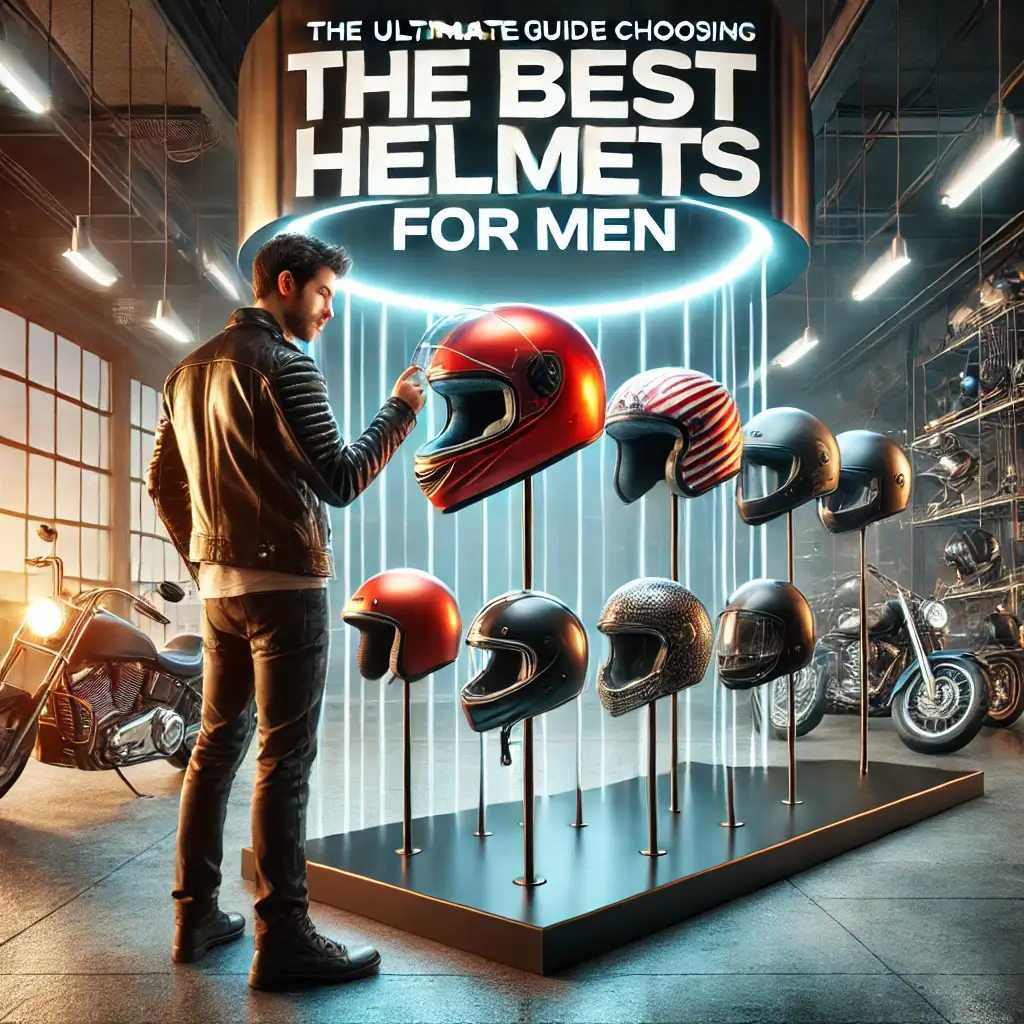Table of Contents
When it comes to safety on the road, helmets are the most crucial piece of protective gear for motorcyclists and cyclists alike. Whether you’re commuting daily, riding for leisure, or enjoying an adventure on two wheels, investing in a high-quality helmet for men is non-negotiable. With various styles, materials, and technologies available, selecting the right helmet can be overwhelming. This guide will help you understand the key factors to consider when choosing the perfect helmet for your needs.
Why Wearing a Helmet is Essential
A helmet provides critical protection by reducing the impact of accidents, shielding the head from severe injuries, and enhancing visibility on the road. Here’s why every rider must wear a helmet:
- Head Protection: Helmets absorb shock and disperse impact energy, reducing the risk of traumatic brain injuries.
- Legal Compliance: In many countries, wearing a helmet is mandatory to ensure road safety.
- Weather Shielding: Helmets protect against wind, dust, rain, and extreme temperatures, ensuring a comfortable ride.
- Enhanced Visibility: Many helmets come with reflective elements and bright colors, making riders more visible to others.
- Noise Reduction: Premium helmets reduce wind noise, allowing for better concentration while riding.
Types of Helmets for Men
Choosing the right helmet for men depends on the type of riding you do. Here are the most common helmet types:
1. Full-Face Helmet
The safest and most protective option, a full-face helmet covers the entire head and face. It provides excellent protection against impact, dust, and harsh weather conditions.
- Ideal for: High-speed riders, long-distance touring, and sports bikers.
- Features: Aerodynamic design, built-in visors, and better noise insulation.
2. Open-Face Helmet (3/4 Helmet)
This helmet covers the head but leaves the face exposed, providing better ventilation and a broader field of vision.
- Ideal for: City riders and cruisers who prefer comfort over full coverage.
- Features: Lightweight, offers good visibility, but lacks chin protection.
3. Half Helmet
A minimalist helmet that covers only the top and back of the head, offering the least protection but maximum airflow.
- Ideal for: Casual riders and scooter users.
- Features: Lightweight, stylish, but provides minimal impact protection.
4. Modular Helmet
A hybrid between full-face and open-face helmets, modular helmets have a flip-up chin bar that allows for versatility in different riding conditions.
- Ideal for: Tourers and adventure riders who need flexibility.
- Features: Dual-functionality, internal sun visor, and better ventilation.
5. Off-Road/Motocross Helmet
Designed for dirt biking and off-road adventures, these helmets have an elongated chin bar and sun visor.
- Ideal for: Motocross and adventure riders.
- Features: Lightweight, superior ventilation, but lacks street-friendly aerodynamics.
Key Features to Look for in Helmets
When buying helmets, consider these essential features:
- Material: Look for high-quality ABS, polycarbonate, fiberglass, or carbon fiber for superior impact resistance.
- Certifications: Always check for safety certifications like DOT, ECE, ISI, or Snell for assured quality.
- Ventilation: Multiple air vents ensure proper airflow, keeping you cool and reducing fogging inside the visor.
- Fit and Comfort: A helmet should fit snugly without causing pressure points. Measure your head size before purchasing.
- Visor Type: Opt for anti-fog, UV-resistant, or scratch-proof visors for better clarity and protection.
- Padding and Lining: Removable and washable inner padding enhances hygiene and comfort.
- Retention System: A secure chin strap with a quick-release mechanism ensures a firm and stable fit.
Tips for Maintaining Your Helmet
To ensure your helmet remains in top condition and provides maximum protection, follow these maintenance tips:
- Clean Regularly: Use mild soap and water to clean the exterior and visor.
- Store Properly: Keep the helmet in a dry place, away from direct sunlight and extreme temperatures.
- Check for Damage: Inspect for cracks, loose straps, or worn-out padding, and replace if necessary.
- Avoid Dropping: Even minor drops can compromise structural integrity.
- Replace Every 3-5 Years: Helmets degrade over time due to exposure to elements and daily wear.
Conclusion
High-quality helmets are not just accessories but necessities for safety and comfort while riding. Whether you’re looking for a full-face helmet for maximum protection or an open-face helmet for convenience, choosing the right fit and features is crucial. Prioritize safety, durability, and comfort when making your selection to ensure a smooth and secure ride every time.
Stay safe, ride smart, and invest in a helmet for men that truly protects you on every journey!

